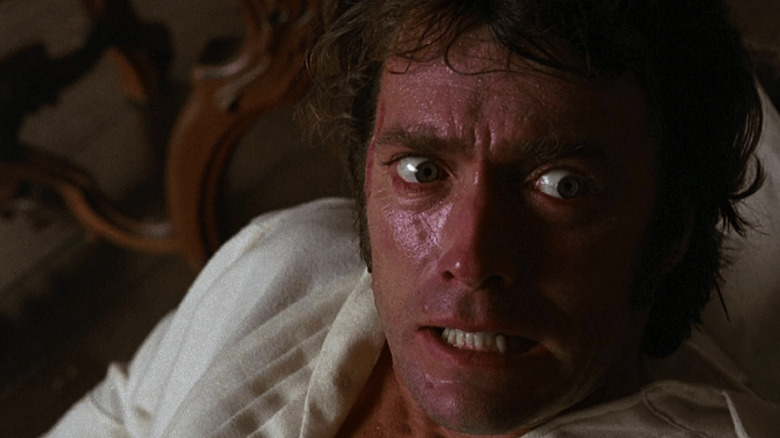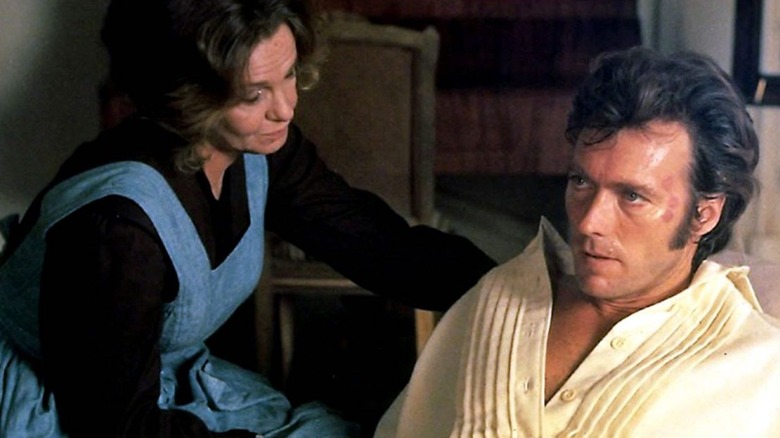How Don Siegel Soothed Clint Eastwood's Doubts About Starring In The Beguiled
Clint Eastwood entered the 1970s at a transitional point in his career. He was for certain a movie star, but, despite hits like the crime-thriller "Coogan's Bluff" and the World War II flick "Where Eagles Dare," he was still primarily associated with Westerns. This was hardly a precarious place to be. He'd earned enough studio goodwill to take a risk or two on a movie that wasn't a straight-down-the-middle commercial play.
Thomas P. Cullinan's novel "The Beguiled" presented such a risk. The Southern Gothic about a wounded Union soldier cared for by a headmistress (Geraldine Page) and her young female charges at a Mississippi seminary was dark and creepy and just about as far from the macho heroics of "A Fistful of Dollars" as Eastwood could get. His character becomes an object of desire for many of the women in the house, and he uses his worldly charm to encourage their advances. When producer Jennings Lang gave Eastwood a copy of the book, the star tore through it overnight. He was intrigued, and took it to "Coogan's Bluff" and "Two Mules for Sister Sara" director Don Siegel, who was equally hooked.
The production was speeding toward production, and it was at this point that Eastwood got cold feet.
Go ahead, saw off my leg
While stars love the idea of stretching their range, they're terrified of doing so with a critical and commercial bomb. According to an interview with Stuart M. Kaminsky, when Eastwood handed the novel off to Siegel, he told his collaborator that he "thought it was the kind of thing that could right to the roof — or right down the toilet." Siegel agreed, which was suddenly a problem for the star:
"He eventually read ["The Beguiled"] and liked it, and then I had doubts. He was kind of the leading force in getting me to do it, as it wound up. He said: You can always be in a Western or adventure, but you may never get a chance to do this type of film again. The studio wanted to do it, so we did it."
Eastwood's apprehensions wound up being justified. The film received mixed reviews in the United States, and performed poorly at the box office. Though French critics adored it, Eastwood quickly moved on and re-teamed with Siegel on the decidedly more successful "Dirty Harry." The star's portrayal of a San Francisco cop who hates the Miranda warning as much as he hates punk criminals gave him his second franchise, one he would ride for five films over 17 years. In fairness, Eastwood never lost his appetite for playing flawed, messed-up men ("Tightrope" is a particularly wild example), but he always made sure this was in the context of a genre his fans enjoyed.

